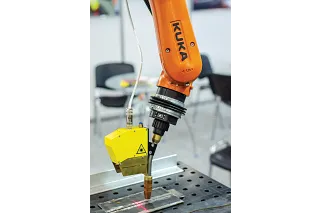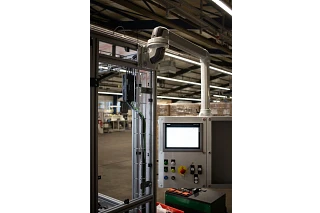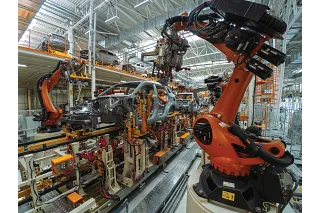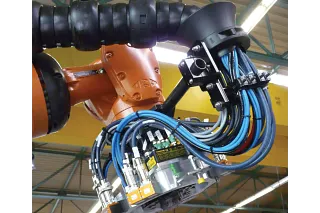Change Language :
Test reports for robot cables
Discover all our durability test reports for our robot cables here.
Fibre optic cable CFROBOT5

Using the CFROBOT5 in practice
The fibre optic cable from the CFROBOT5 robot cable family is always immediately associated with a 6-axis articulated robot because it always involves torsion. But that doesn't always have to be the case, because customers very often have sensitive signals to carry. These signals come from actuators that are guided in free, undefined movements and torsion also plays a role there. Extremely precise measurements produce an incredible amount of data and this can be transported most reliably without interference via a fibre optic cable. The challenge is to cushion the sensitive fibre optic element in the cable so that it cannot be damaged, not even in the long term.
Motor cable CFROBOT7.25.04.C

Using the CFROBOT7 in practice
The aim of the test was to determine the service life of the twistable motor cable of the CFROBOT7 robot cable family. The CFROBOT7 is required to reliably withstand continuous movement, such as in a robot with a torsion of +/- 180°, as found in the automotive industry.
In these applications, it is often the case that the robots are constantly in motion and therefore the cables are constantly exposed to this torsion. Thanks to a folded overall shield and the robust PUR outer jacket, this cable is ideal for use in 3D movements.
Motor cable CFROBOT.036

Using the CFROBOT in practice
In most cases, torsion is associated with a 6-axis robot. But there are also many free, undefined movements that can put a lot of strain on a cable. E.g. in the feed-through of a pivoting arm. The cables must be kept out of the way as much as possible, so it makes sense to guide them inside the device. However, if the corresponding arm is not only bent up and down, but can also be rotated at several points, corkscrews often occur with conventional cables. However, the CFROBOT can easily cope with this load. With a torsion angle of +/-180° per metre of cable length, it can withstand the load and thanks to its shielding, electromagnetic compatibility with the nearby data and control cables is also ensured.
Bus cable CFROBOT8.045

Using the CFROBOT8 in practice
The CFROBOT8.045 cable is very often used in automotive production, for example in moving measuring units assembled on the 6th axis of the robot. There they move to inspection points and carry out analyses for quality assurance in production. To do this, the cables that transport the sensitive Ethernet signal are twisted a great deal. For such tasks, 100% reliability on the robot counts.
CFROBOT8.PLUS.045 bus cable

Using the CFROBOT8.PLUS in practice
Camera-based robot applications are often used in industry, for example to recognise barcodes or carry out quality assurance. However, this application is also used in television studios. Here, it is particularly important to have an extremely reliable energy and data supply and to be able to perform very demanding movements.
Consulting
I look forward to answering your questions
Hennlich doo Beograd+381 11 63 098 17Write e-mail
Shipping and consultation
In person:
Monday to Friday from 7 am - 8 pm.
Saturdays from 8 am- 12 pm.
Online:
24h
WhatsApp-Service:
Montag – Freitag: 8 – 16 Uhr